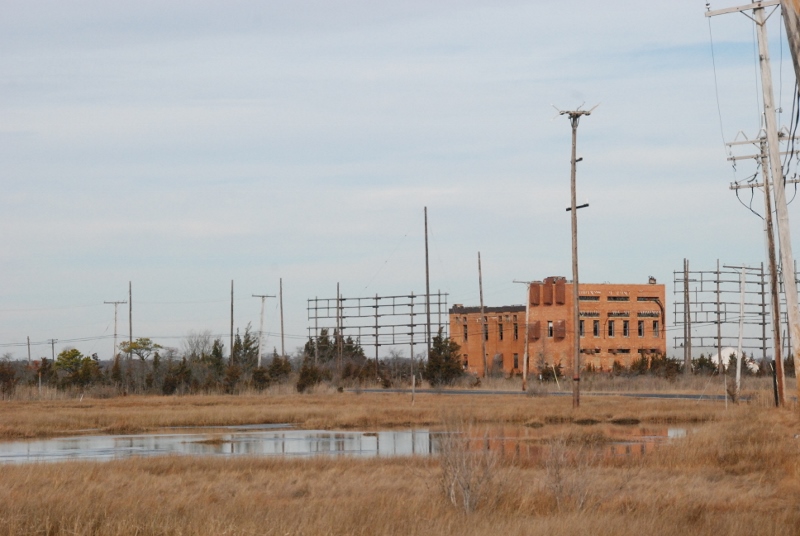The remains of shortwave radio station WOO — for decades the Atlantic coast hub of American Telephone & Telegraph’s high seas radio service — will likely disappear in the coming weeks.
The U.S. Fish and Wildlife Service with contractor Amec Foster Wheeler Environment & Infrastructure Inc., plans to remove more than 500 antennas and poles that stud 222 acres of salt marsh on New Jersey’s Barnegat Bay.
The site at Good Luck Point was the transmitter station for WOO, which from the early 1930s onward was a shore-to-ship critical link to U.S. bluewater and coastwise shipping. Right up to the dawn of cellular telephones in the late 20th century, mariners could place telephone calls by contacting the AT&T marine operator on VHF channels.

High seas and overseas radio operators at AT&T's New York City switchboard in 1943 handled calls through station WOO. AT&T photo.
Also known as the Ocean Gate site, the transmitter worked in tandem with a receiver site about 15 miles south on the marsh at Manahawkin, N.J. Both were part of AT&T’s national “long lines” system, along with stations KMI near San Francisco and WOM near Miami.

An operator at radio station KMI in California, 1966. Maritime Radio Historical Society photo.
As technology changed and users began falling away, the stations still provided single-sideband (SSB) radiotelephone service up to February 1999 when AT&T announced it was ceasing operations. Satellite service had usurped the old manned shoreside station model, and the company was selling customers on its own Sea Call service using Inmarsat technology.
The New Jersey sites were soon abandoned, and the Good Luck Point tract was purchased in 2003 by the non-profit Trust for Public Land, to be donated to the Edwin B. Forsythe National Wildlife Refuge.
Among boaters passing on Barnegat Bay, the decaying antenna array is jokingly called “the telephone pole farm.” U.S. Fish and Wildlife biologists always wanted to clean up the site and restore the marsh to improve its value for wildlife, but never had the money.
That changed after Hurricane Sandy hit the region in October 2012. Parts of the 47,000-acre Forsythe refuge were inundated with wreckage from flooded homes and marinas, and the wildlife service eventually got $15 million out of federal Sandy relief funding for the cleanup. Some $1.7 million of that will go to clearing the Good Luck Point site, which is getting priority with the limited funding.
Contractors will use airboats to work in the marsh and bring cut-up poles and steel in for disposal. Some poles will be left standing, for use as osprey nest platforms.





